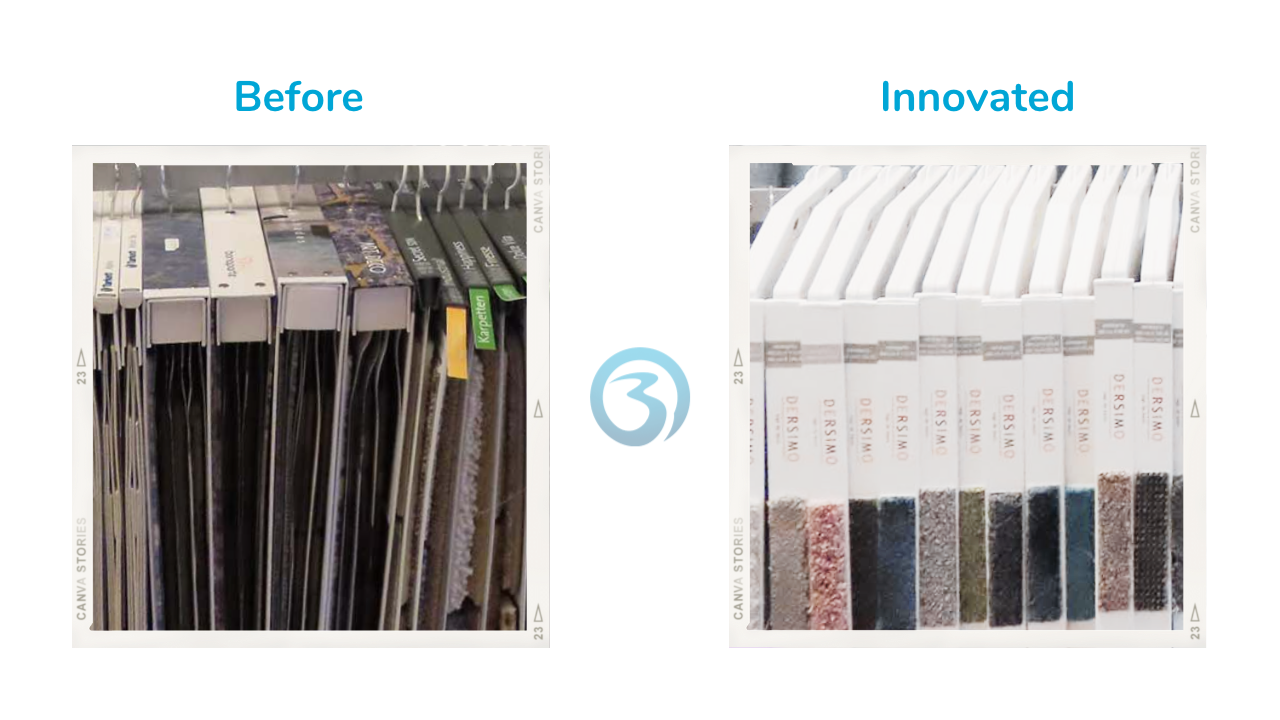
Drawing from a real-life example of a carpeting company that successfully differentiated its product and increased sales, this blog offers practical advice and small steps to help you put these lessons into practice.
The Story:
The carpeting company had been in business for years, but lately, they struggled to stay afloat in the market. The rise of competitors offering lower prices had put them in a negative price spiral. They faced the tough decision of either lowering their prices even further or finding a way to differentiate themselves and offer something unique to their customers.
The CEO, Ton, sat in his office, contemplating their options. He knew lowering prices would only lead to a race to the bottom, and they couldn't afford to keep doing that. He needed a new approach to making their product stand out in a crowded market. So he called me.
As we sat there, staring at the carpet samples on his desk, an idea began to form.
What if we positioned carpeting not just as a product but as a foundation for family life? What if we tapped into the emotional value of carpeting, highlighting its role in the significant moments of a person's life?
We shared the idea with his team, and we got to work. We developed a marketing strategy focused on the "exuviation moments" in a person's life - the times when they were getting rid of the old and creating something new. We positioned carpeting as an essential element in these moments, marking the transition meaningfully.
We emphasized the tactile characteristics of carpeting, encouraging customers to touch and feel the product during the buying process. We completely redid the way carpeting was represented on the shop floor: from hanging samples to book covers with visible, touchable fabric on the spines.
Inside the "book,” we highlighted the importance of comfort, hygiene, and status, making carpeting a more significant purchase than just a simple flooring choice.

The new approach worked. Customers responded positively to the emotional value of carpeting, and sales began to climb. They didn't become the cheapest option but didn't need to be. By offering something unique and tapping into the emotional value of their product, they differentiated themselves in the market and found a way to escape the negative price spiral.
As Ton looked out over the bustling warehouse floor, he knew their decision to focus on the emotional value of carpeting had been the right one. It had saved their business and given them a new lease on life. And he knew that, in the future, whenever they faced tough decisions, they could look back on this experience and know that sometimes the right answer lay not in the past but in the future.
The Lessons Learned
- Focus on the future: When faced with a tough decision, it's easy to get bogged down in past mistakes and try to rectify them. But sometimes, the key to success lies in looking to the future and finding new ways to add value for your customers.
- Differentiate your product: In a crowded market, offering the lowest price may not stand out. Find a unique angle or emotional value for your product that differentiates it from the competition.
- Emphasize the customer experience: In this case, the company focused on the tactile experience of touching and feeling carpeting, making it a more significant purchase for customers. Consider what elements of your product or service can create a memorable customer experience and highlight those during the buying process.
Steps You Can Take Today to Improve
Here are three simple steps you can take to put the lessons learned from the blog's story into practice:
- Conduct a future-focused analysis: Take a step back from past mistakes and instead focus on future opportunities for your business. Identify potential trends, customer needs or behavior changes, and emerging technologies that could affect your industry. Brainstorm ways to adapt your product or service to meet these future needs.
- Identify your unique value proposition: Look closely at your product or service and determine what differentiates it from competitors. Is there an emotional value that you can tap into to make your offering more meaningful to customers? Consider conducting customer surveys or focus groups to get feedback on what they find most valuable about your product or service.
- Improve the customer experience: Consider ways to make the buying process more memorable and enjoyable for customers. Consider adding elements that engage their senses, such as providing product samples or allowing them to touch and feel the product. Train your staff to be knowledgeable and helpful, and provide excellent customer service to create a positive experience that customers will remember.
These are just a few steps to get started. As you implement these changes, monitor customer feedback and track sales data to evaluate their effectiveness and adjust as needed.
Remember that small changes can add to significant improvements over time, so stay focused on the future and keep striving to differentiate your business in the marketplace!
If you need help, please visit the services page.
Fresh Foresight Insights Directly in Your Inbox
Join Barbara's mailing list to receive her latest Canary and updates about her research into managerial foresight and blind spots.
I hate SPAM too, so know that I won't spam or have others spam you!

